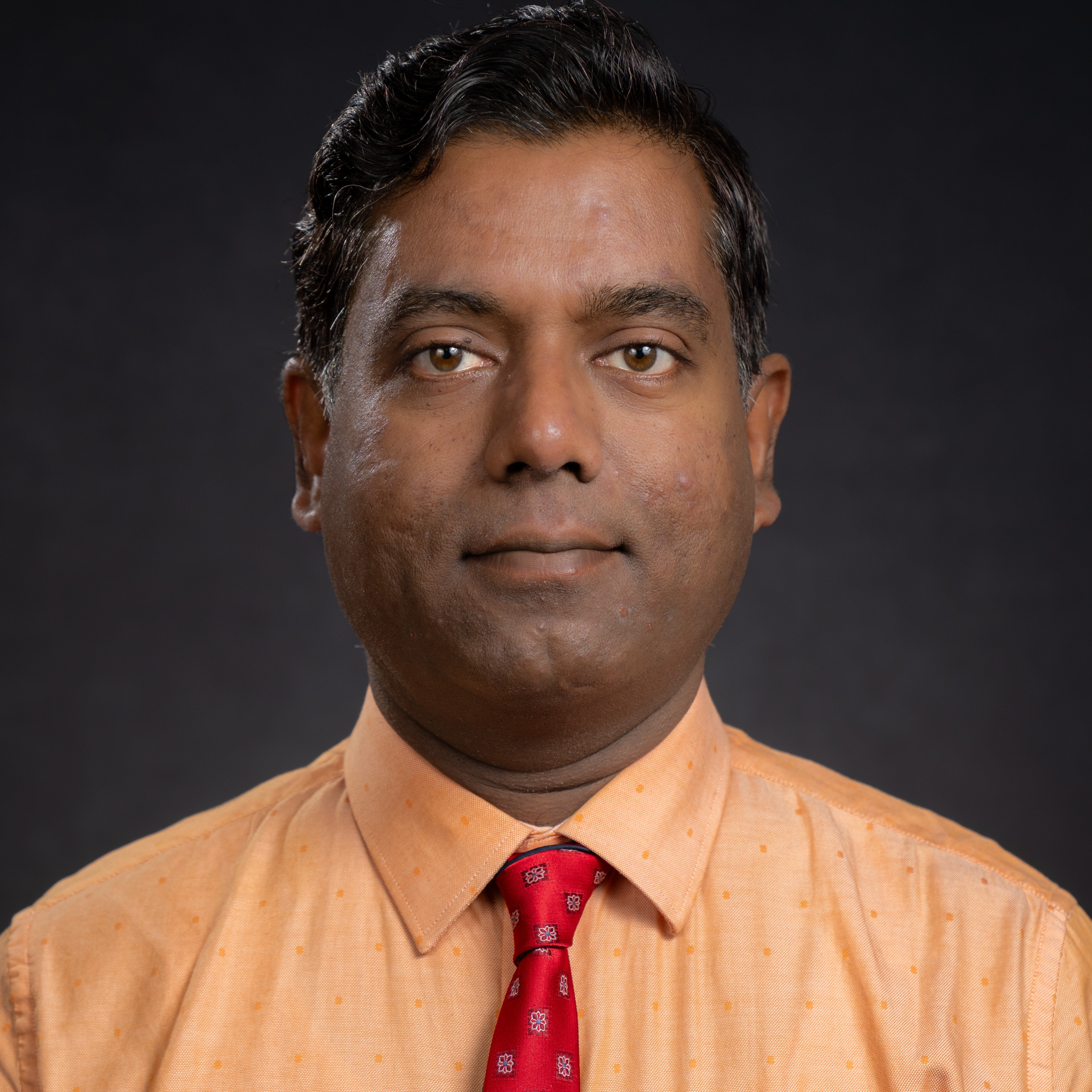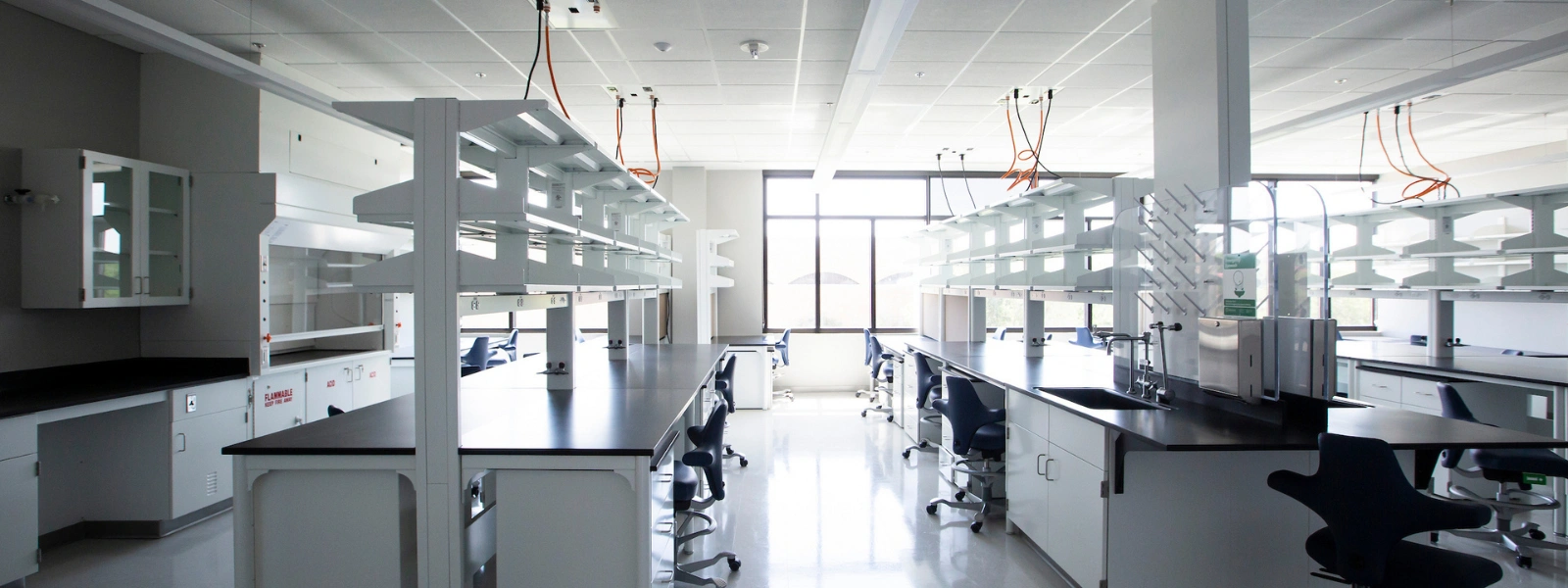
NAME: Nitin Vishwakarma
CREDENTIALS:
MBBS – NSCB Medical College, Jabalpur, India
MS (Master of Surgery) – GR Medical College, Gwalior, India
Fellowship – International FAIMER Institute, Philadelphia, USA (2021–23)
(FAIMER – Foundation for Advancement of International Medical Education and Research, an ECFMG Institute)
EMAIL: nitin.vishwakarma@utrgv.edu
OFFICE PHONE: 956-296-2049
PRIMARY ACADEMIC TITLE: Assistant Professor
Dr. Nitin Vishwakarma obtained his MBBS from NSCB Medical College in April 2000. He worked as the Resident Medical Officer in clinic at the Hazira Gas Processing Complex, ONGC (India) from September 2000 to September 2001. He participated in the Master of Surgery program at GR Medical College from 2003 to 2006, during which he worked as a resident in the Department of Anatomy and completed his thesis on the topic, "A Study on Sexual Dimorphism of Human Permanent Maxillary and Mandibular Canines."
After completing his MS in 2006, he started his teaching career in November 2006 as Assistant Professor of Anatomy at the MediCiti Institute of Medical Sciences (India). He has been teaching anatomy and its subdisciplines (neurosciences, histology, embryology, radiological anatomy and functional anatomy) for more than 20 years and has taught medical students in various institutions in India and abroad. He was an Associate Professor at Xavier University School of Medicine (Aruba) from 2011 to 2012 and at Spartan University School of Medicine (Saint Lucia) from 2012-2013.
Before coming to the United States, he was faculty in the College of Medicine and Health Sciences at the National University of Science and Technology (Oman) from 2013 to 2011. He was the Course Director of Neurobiology (8 credit hour course), Human Structure (18 credit hour course) and Anatomy II (11 credit hour course).
He completed training in plastination techniques in December 2017 at the University of Murcia (Spain) under the aegis of the International Plastination Society, in which he learned and did hands-on training to do solid organ plastination (S-10 method) and sheet plastination (P-40, E-12 method).
As part of his continuous endeavor to improve pedagogy and experiment with teaching methods, he successfully implemented Flipped Teaching and Team-Based Learning to study Clinical Anatomy of Brainstem. He implemented this teaching method later in teaching other clinically important topics in the Human Structure and Anatomy II course. He facilitated and experimented with various other teaching methods: Case-Based Learning, Presentation-Based Learning, and Problem-Based Learning. He did his fellowship in teaching and research at the International FAIMER Institute (IFI) in Philadelphia from 2021 to 2023. The Foundation of Advancement of International Medical Education and Research, or FAIMER, is funded by ECFMG (USA) and was created to promote medical education and research internationally. During the fellowship he researched novel methods of teaching to improve integration and self-directed learning.
He was the Lead of the Sub-committee on Curricular Integration. Under guidance from the Medical Education Unit, he compiled the Manual on Problem-Based Learning and worked to implement Problem-Based Learning in COMHS.
He is presently working as Assistant Professor in the School of Podiatric Medicine (SOPM), at The University of Texas Rio Grande Valley (UTRGV) and is module lead of Lower Extremity Anatomy. He is continuing his research on Flipped Teaching, Distance Education, Team-Based Learning, Problem-Based Learning and Case-Based Learning, along with various topics of Clinical Anatomy.
During his free time, he enjoys spending time with family, helping to cook delicious food, watching Bollywood shows, and traveling to new destinations.
- Clinical anatomy
- Medical education
- Plastination
- Online Neurobiology Course -An Emergent Plan during the Pandemic. Journal of Liaquet University of Medical and Health Sciences, 2023, 10.22442/jlumhs.2023.01026.
- Effectiveness of clinically relevant anatomy review sessions held during surgery rotations. Int J Anat Res 2023, Vol 11(3):8646-54.
- Variations in the arteries of the upper limb - a clinical apropos. Italian Journal of Anatomy and Embryology 2022. 125(1), 27-35.
- Clinically relevant Variations in the Origin and Course of the Radial Artery. ASJ. 2021; 18 (1) :7-14.
Correlation of occipital condyles with cranial index in both sexes of Rajasthan population – A metrical study. International J of Contemporary Surg. 2016; 4(1):32-6.
- Study of prevalence of type II diabetes in post-appendectomy patients in Rajasthan population. International J of Contemporary Surg. 2016; 4(1):4-6.
- An Anthropometric Analysis of Dry Human Sacrum: Gender Discrimination. International Journal of Science and Research (IJSR) 2015; 4(4):1305-1310.
- A study of sexual dimorphism in permanent mandibular canines and its implications in forensic investigations. Nepal Med Coll J. 2011, Jun;13(2):96-9.
- Left inferior accessory renal artery - its embryological basis and clinical significance. J of College of Medical Sciences-Nepal 2011; 7(1):65-68.
- Anomalous third part of the axillary artery- anatomical, embryological, and clinical relevance. J of College of Medical Sciences-Nepal 2011; 7(3):43-47.
- Agenesis of isthmus of thyroid gland, its embryological basis and clinical significance - a case report. Nepal Medical Coll J. 2010 Dec;12(4):272-4.
- Formation of median nerve by three roots – a case report. J of College of Medical Sciences-Nepal. 2010; 6(1):47-50.
- Variant insertion of coracobrachialis muscle – morphological importance, embryological basis, and clinical significance. J of College of Medical Sciences-Nepal. 2010; 6(2):42-46.
- Rare variations in the formation of median nerve – embryological basis and clinical significance. Nepal Med Coll J. 2009; 11(4):287-290. PubMed PMID:20635613.
- Variation in relation of cords of brachial plexus and their branches with axillary and brachial arteries – a case report. Nepal Med Coll J. 2009; 11(1):69-72.

